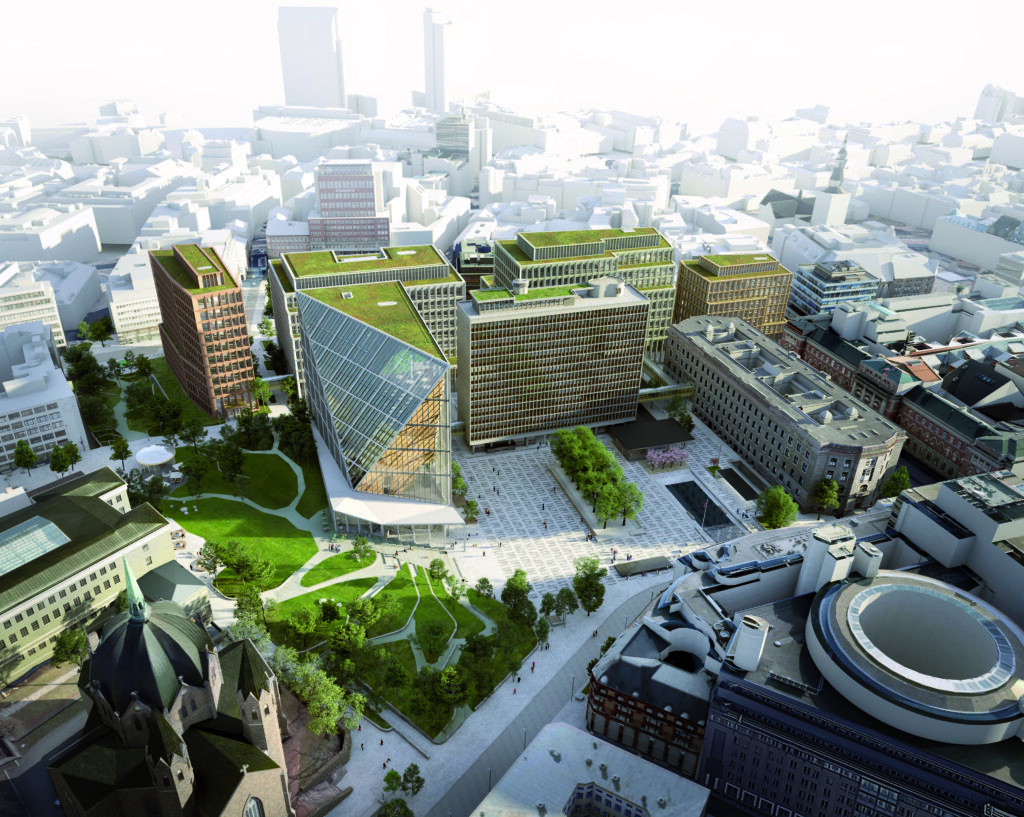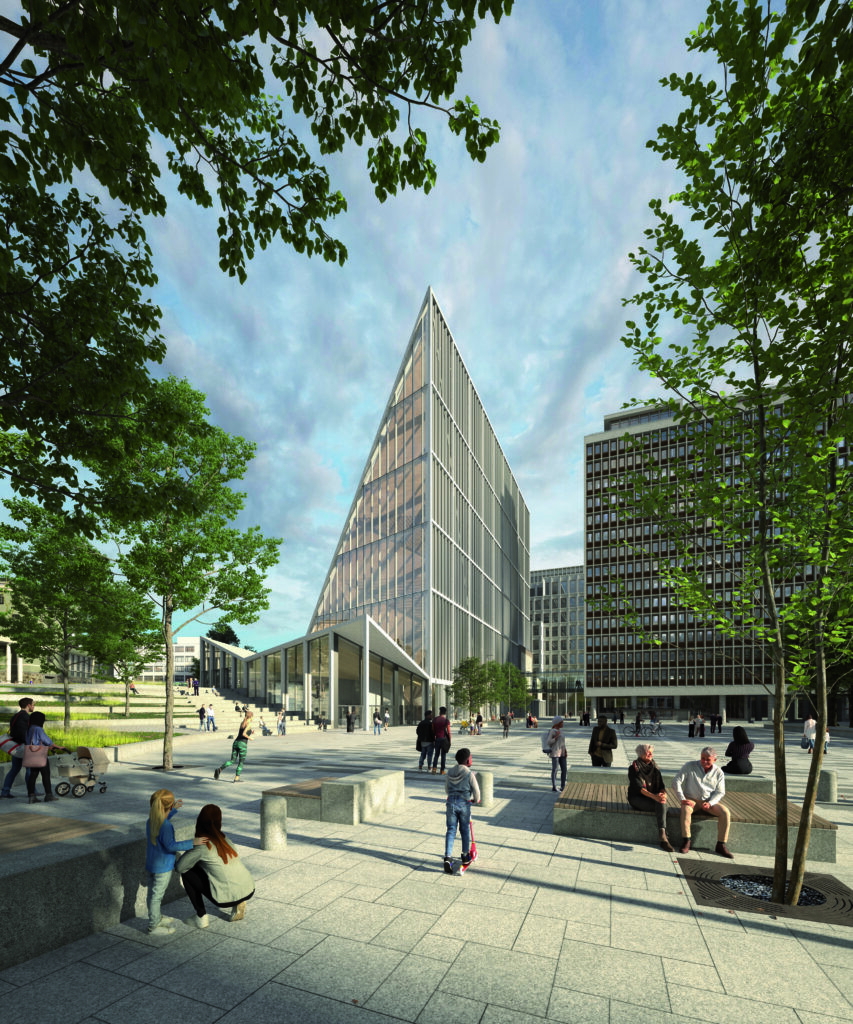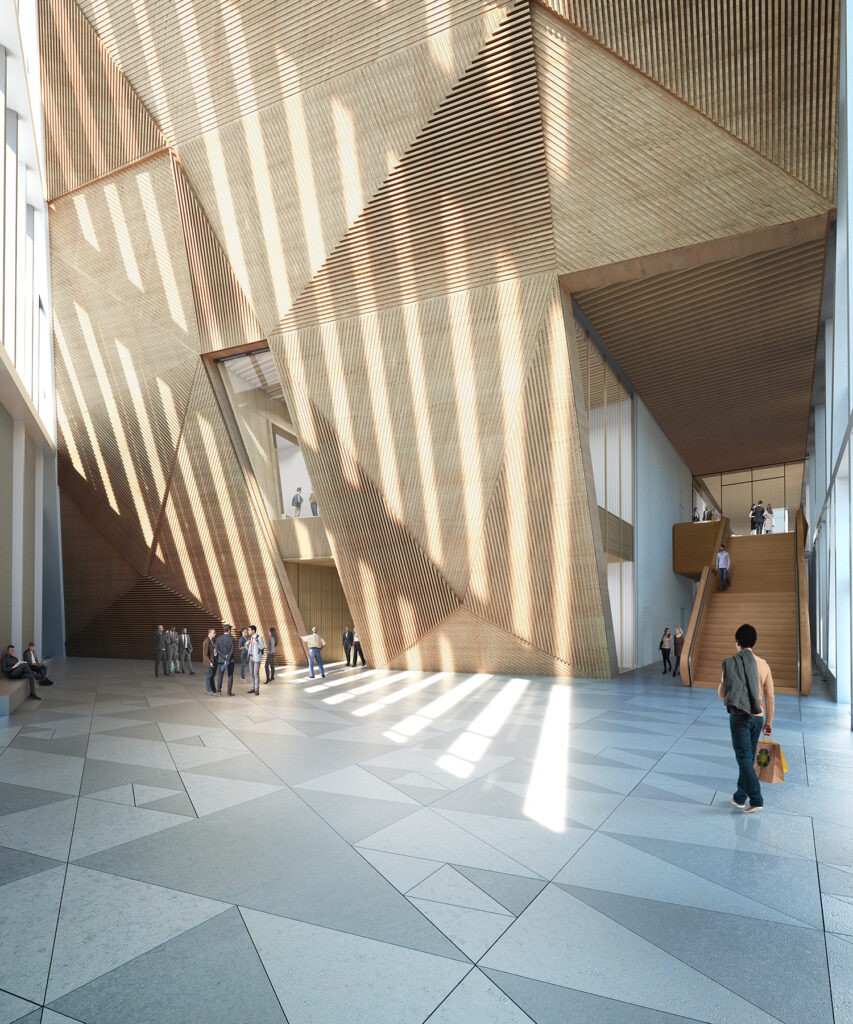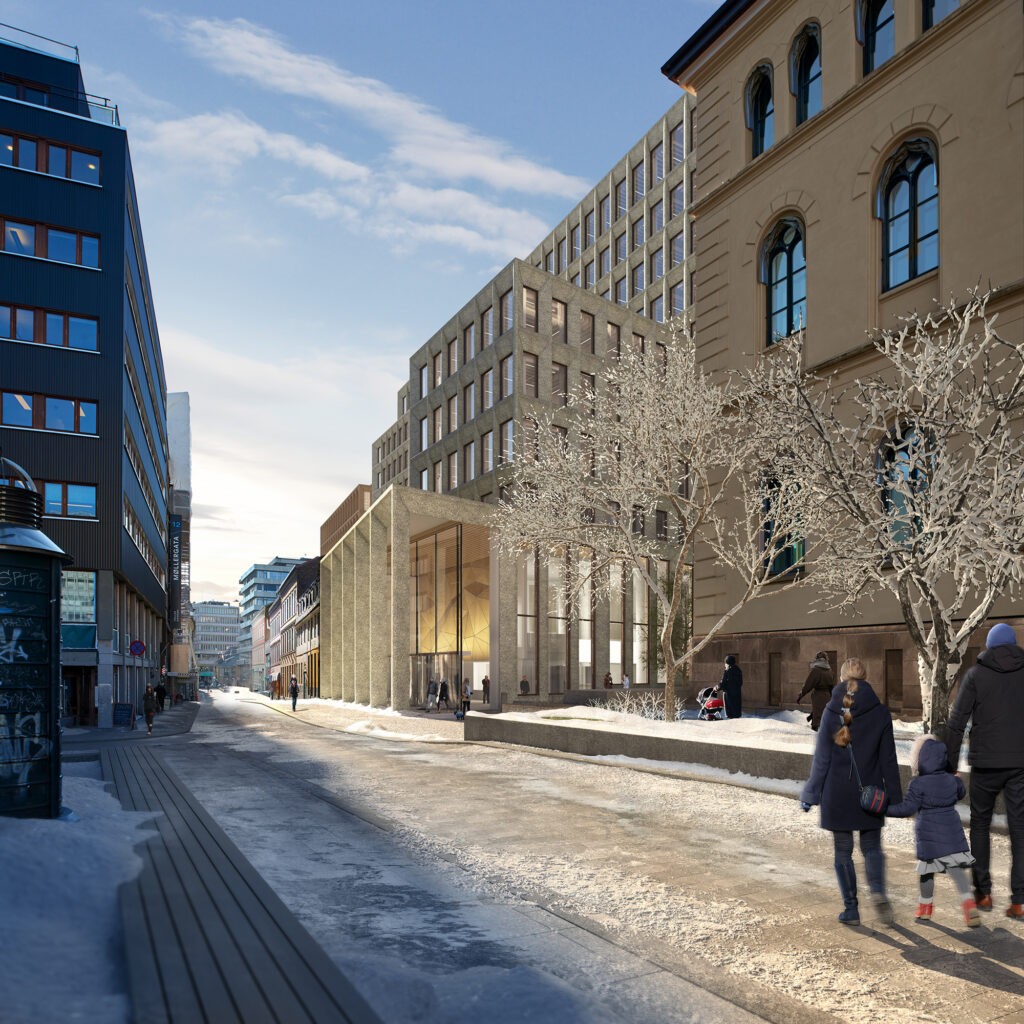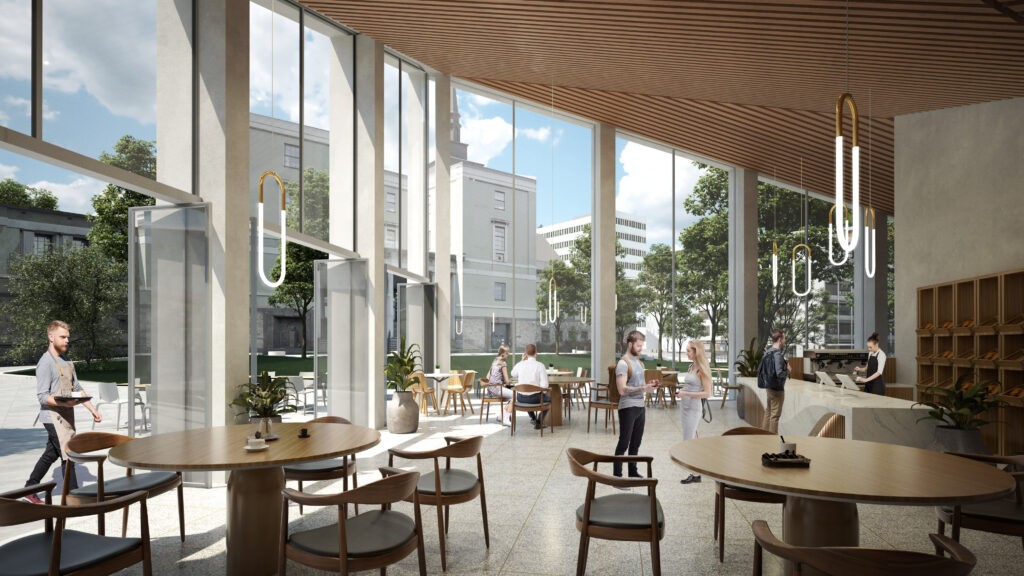More than 2 billion The Government Quarter, which is being built in Oslo, the capital of Norway, is worth no less attention and debate in its country than the analogous project implemented in Vilnius, on A. Goštauto Street. Both projects promise to bring new life to forgotten and abandoned parts of cities, to create modern and collaborative workplaces.
Terror started the project
The Norwegian company "Statsbygg", which manages state assets, names the July 2011, 22 terrorist act committed by Andres Breivik as the start of the new Government Quarter project. That summer afternoon, a white minibus stopped in front of the Government building where the Prime Minister and the Minister of Justice worked, as it turned out to be loaded with a homemade bomb weighing 950 kg. Just a few minutes later, the explosion took the lives of 8 people and government buildings were destroyed.
"This terrorist act showed that the Government is not immune from such cases. And this led to a debate about what should be done next. We have always paid a lot of attention to ecology, human health, and creating safe working conditions, but we were not prepared for what happened," Jardas Bringedal, director of the Norwegian Government Quarter project, recalled the lessons of history.
There was a lot of discussion about the location, whether the city center is suitable for this, whether all ministries should work in one place, what security challenges arise and how to manage them. However, after considering all the circumstances, including socioeconomic parameters, it was decided to build a new Government Quarter in the city center, in the same place where the explosion took place.
The goal is cooperation between ministries
"Such a decision was determined by many carefully discussed arguments. One of them is the social aspect, it is hoped that this project will help change the culture and encourage cooperation. The aim is to form a community of ministries, where there will be more cooperation than it has been done so far. In addition, we strive for greater efficiency and flexibility, we want to build such a block that will be used for a long time. After all, this project is also an urban repair project. This place is not beautiful now, but it will become so when we implement the project", J. Bringedal is convinced.
He believes that the fact that all ministries will work in one block also simplifies the solution of security and many other issues: "It's not just the buildings that we build, but also the system that we build around. We can create a security structure that will be controlled and developed based on the same standards."
The Norwegian project envisages the demolition of three large buildings that suffered the most during the terrorist attack and which are not worth renovating, two buildings will be reconstructed (33 thousand square meters of area), and five new large structures will be built (125 thousand square meters of area, of which 37 square meters are being developed underground). All of them are intended to be connected by bridge connections above the ground.
In order to create a culture of cooperation, the new offices are planned according to the activity-based office concept. Employees of ministries and the Government will be able to work where they are most comfortable in order to perform different tasks. This is to ensure flexibility and good conditions for cooperation.
It is planned to create 75 percent fixed jobs, that is, 75 jobs will be needed for 100 employees. On the other hand, with small boardrooms, meeting rooms and other spaces, there will always be room for all employees if the offices have XNUMX% occupancy.
Public spaces are planned in the quarter, there will be a cafe, a library, a park and bike paths will be established. According to the plan, the new ministry quarter in Oslo should be completed by 2030. It will house all the country's ministries, except for Defense.
A similar concept will be followed in the case of the A. Goštautas quarter in Vilnius: some of the low-value and unfit buildings will be demolished, the rest will be modernized, and new construction is planned. It is planned to open the first floors of the buildings to the public, to install public spaces and squares between the buildings. The final development concept of the quarter should become clear in the near future, after the completion of negotiations and the publication of the urban plan- the winner of the architectural competition.
Sustainability is a daily choice
The project also includes a seawater facility that will fully supply the building complex with energy, ensure its heating and cooling, and the energy
the surplus will be sold in the market. This type of energy supply to buildings is not unique to Norway and is used in other buildings as well. From the moment of conception, the project meets the highest sustainability standards and has a BREEAM Excellent sustainability certificate.
"If security issues are a challenge for us, then sustainability is our daily routine. In this sense, we do nothing different than any other construction or reconstruction project of ours. We have a plan to reduce greenhouse gas emissions, there are specific indicators that are constantly monitored and recorded, and I receive weekly reports on how well we are implementing them," the interviewer says.
Environmentally and human-friendly solutions are reflected even in the smallest details of this project. Let's say all the transport used on the construction site is powered only by biofuel, the construction workers' barracks are supplied with hot water and heating from a garbage incinerator, and so on.
Don't want to move
A total of 120 people work in the project team led by J. Bringedal. One of the departments is responsible for external relations and includes everything from relations with the ministries that will move to the new quarter to communication with neighbors and the media.
"I think this unit is one of the most successful solutions in this project. The professionals working there know everything about the project, its progress, they are everywhere, they constantly communicate with the neighbors and explain everything to them. This project is carried out in the center of Oslo, where there are institutions, businesses, hotels that do not like the noise and traffic jams we make. The rising dissatisfaction and aggression can be reduced only by information, and this requires people who know what to do in such situations," says the head of the Norwegian Government Quarter project.
He admits that Norwegian ministries are not eager to move to the new quarter: "They don't want to move, they are afraid of the unknown and have a negative attitude. But this is not a challenge, it is very human and understandable. All we have to do is to manage the project well, keep the customers informed and in touch, and respond to their needs."
The project is implemented in stages
The total value of the Government Quarter project is more than 2 billion. euros. As the project moves into the active construction phase from 2021, 45 million worth of work and services are being provided every month. euros.
"A project of this scale is too big for the Norwegian market, so we had to break it up into parts so that the market could take it on." We have carefully prepared and planned for this. We currently have one large value contract for each of the buildings and about 230 different smaller contracts. So managing this entire huge project is a challenge," says the Project Director of the Norwegian Government Quarter.
It is also not easy that the central part of the city, whose transport and communication system is not adapted for construction of this scale, was chosen for the project. Special transport complicates movement in the city center and causes additional traffic jams.
However, the interviewee considers security issues to be the biggest challenge, which also significantly increases the cost of the project. The access of both persons and vehicles to the construction site is controlled. Currently, 4,5 thousand people are working on the construction site and with the project. people whose experience and reliability have been verified.
“This is the price we pay to protect our values from potential enemies, whoever they may be. It's new to the construction industry, we don't have much experience in it, so it's a big challenge. Without this security aspect, it would be a huge construction project of office buildings", believes the representative of Statsbygg.
